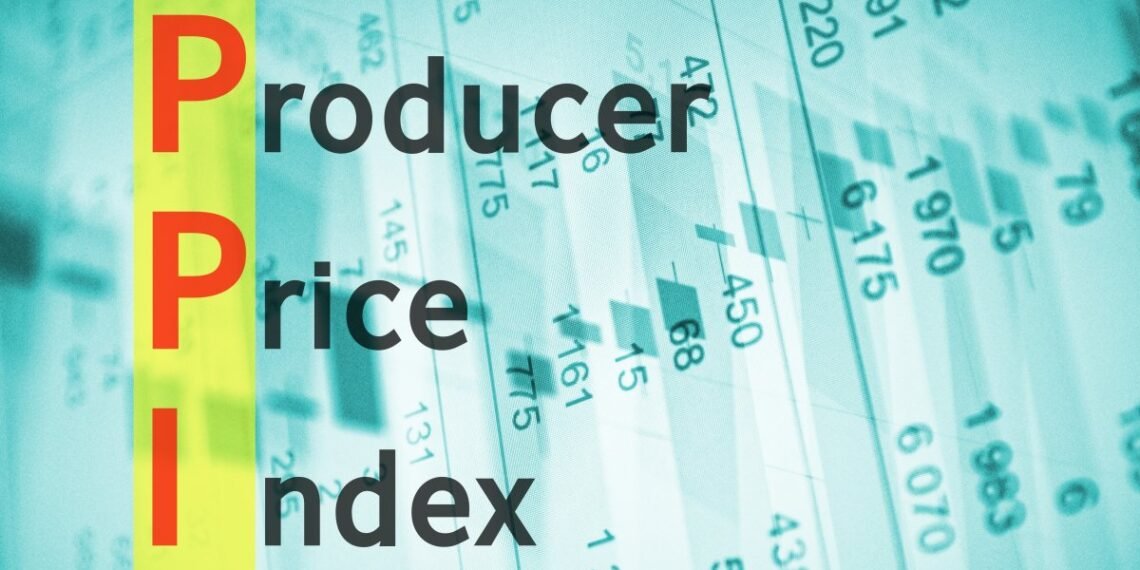Ghana’s producer price inflation (PPI) climbed sharply to 28.5 percent year-on-year in January 2025, up from 26.1 percent in December 2024, according to the latest data from the Ghana Statistical Service (GSS).
This represents a 2.4 percentage point increase in producer inflation compared to the previous month, underscoring rising cost pressures within the country’s industrial and services sectors.
On a month-on-month basis, producer inflation rose by 3.6 percent between December 2024 and January 2025, marking a significant shift from the 1.4 percent decline recorded in the prior month. The PPI measures the average change over time in the selling prices of goods and services received by domestic producers and serves as a key indicator of inflationary trends across Ghana’s economy.
A sectoral breakdown of the data reveals that inflation within the industry sector, excluding construction, surged from 40.2 percent in December 2024 to 43.7 percent in January 2025. This sector, which includes mining, quarrying, and manufacturing, continues to experience high inflationary pressures, largely driven by rising input costs and global commodity price fluctuations.
The mining and quarrying sub-sector recorded the highest year-on-year producer price inflation rate at 47.5 percent, followed by the manufacturing sub-sector at 19.9 percent. These two sectors remain pivotal to Ghana’s industrial landscape, and their rising cost structures could have broad implications for the economy.
On a monthly basis, the mining and quarrying sub-sector recorded the highest inflation rate at 6.6 percent, reflecting ongoing cost escalations in extracting and processing minerals. The manufacturing sub-sector followed with a 2.0 percent month-on-month increase, indicating that higher production costs are being passed on to consumers.
In contrast, the water supply, sewerage, and waste management sub-sector had the lowest year-on-year producer inflation rate at 4.8 percent and recorded no inflation on a month-on-month basis in January 2025.
Inflation Trends in the Construction Sector
The construction sector also witnessed a notable increase in inflation, with the year-on-year producer price inflation rate rising to 29.8 percent in January 2025. The sector’s monthly inflation rate stood at 0.3 percent, indicating a relatively moderate price movement compared to other sectors.
Within construction, the civil engineering sub-sector recorded the highest year-on-year producer price inflation at 37.3 percent, highlighting the rising costs of infrastructure projects. The specialised construction sub-sector followed with an inflation rate of 18.7 percent, while the buildings-construction sub-sector had the lowest inflation rate at 14.7 percent.
However, on a month-on-month basis, the buildings-construction sub-sector recorded the highest inflation rate of 0.6 percent, followed by the specialised construction sub-sector at 0.3 percent. The civil engineering sub-sector recorded the lowest monthly inflation rate at 0.2 percent, indicating relatively stable costs in that area.
Inflationary Pressures in the Services Sector
The services sector recorded a year-on-year producer price inflation rate of 7.7 percent in January 2025, with a monthly increase of 0.4 percent. While this sector experienced lower inflation compared to industry and construction, certain sub-sectors saw significant cost increases.
The accommodation and food service sub-sector recorded the highest year-on-year inflation rate within services, standing at 29.0 percent. This was followed by the transport and storage sub-sector, which posted a 22.0 percent inflation rate. These increases reflect rising costs in hospitality and logistics, driven by higher fuel prices and operational expenses.
At the lower end of the spectrum, the information and communication sub-sector recorded the lowest year-on-year inflation rate at 4.2 percent. Similarly, on a month-on-month basis, the information and communication sub-sector had the lowest inflation rate at 0.2 percent, whereas the accommodation and food service sub-sector recorded the highest monthly inflation rate at 1.7 percent, followed by transport and storage at 1.1 percent.
Economic Implications
The sharp increase in producer price inflation suggests that businesses across multiple sectors are facing higher costs, which could eventually translate into rising consumer prices. The industrial sector, particularly mining and manufacturing, remains a key driver of inflation, with persistent cost pressures that could affect overall economic stability.
The rising inflation in the construction sector also raises concerns about the cost of infrastructure projects, while the surge in service-sector inflation—especially in accommodation and transport—could impact consumer spending and business profitability.
The coming months will be critical in determining whether these inflationary pressures persist or if economic interventions can mitigate their impact.
READ ALSO: ECG Procurement Scandal: Prof. Asare Demands Accountability



















